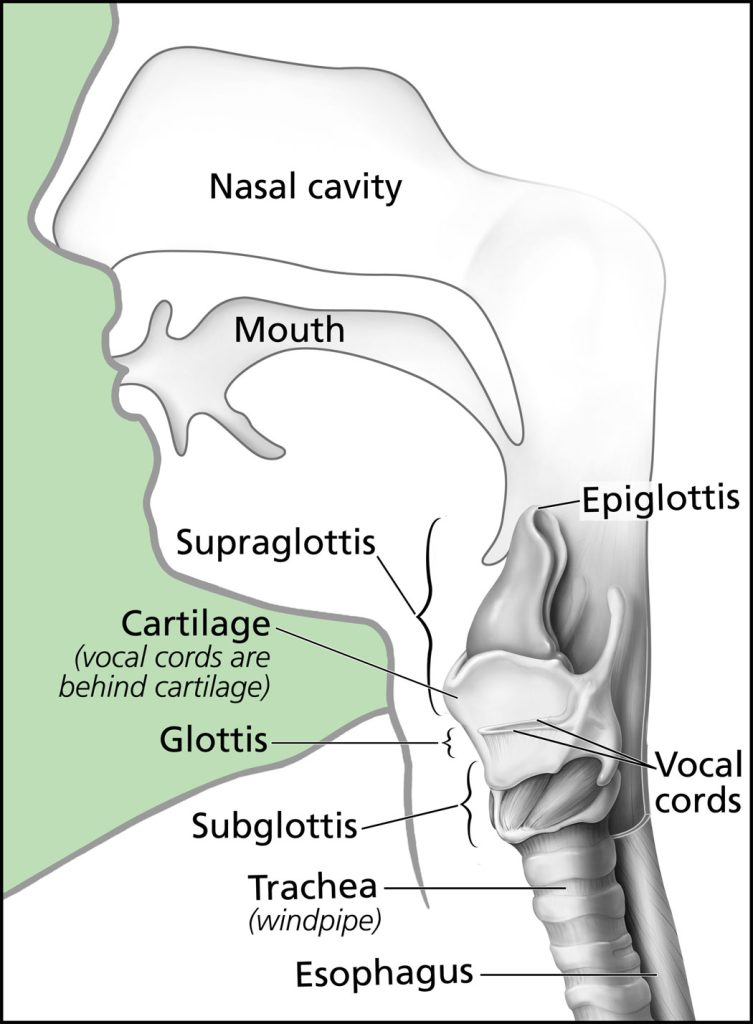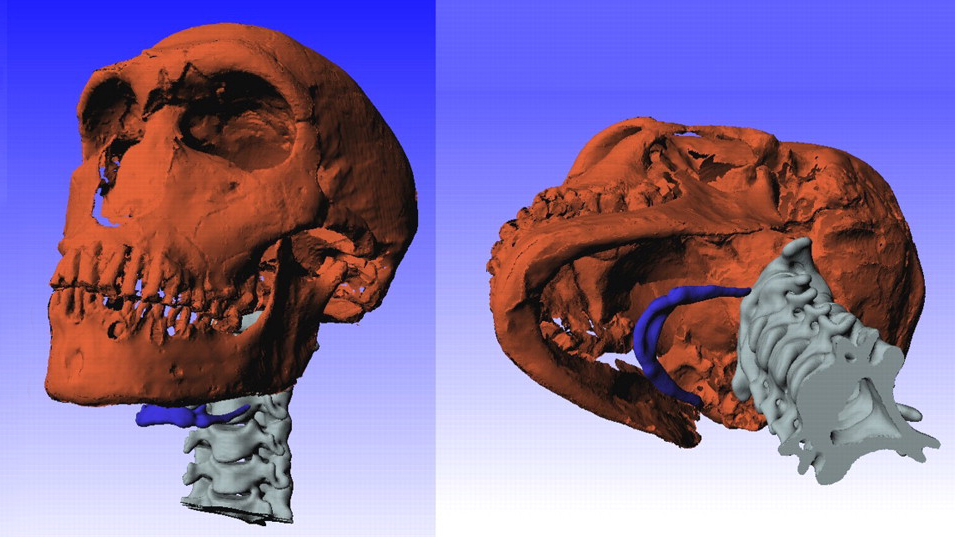The Neanderthal Throat—Did Neanderthals Speak?
The first two pages of Claire Cameron’s novel The Last Neanderthal contain a glossary—a handful of words used by the family of Neanderthals at the center of the story. This imaginary language helps to paint a rich picture of Neanderthal life within the fictional narrative, but it makes a massive assumption about a question still much debated by researchers: Did Neanderthals speak?
There is no shortage of opinions on the origin and evolution of language. Some researchers argue that only Homo sapiens is capable of full-fledged spoken language, with all of its grammatical complexity and nuance. Others assert that language is found in multiple animal species. Speculation on this topic has been contentious for centuries. In 1866, in fact, the French Academy of Sciences banned any further publications on the evolution of language, as the subject had become so fraught.
At the very least, in order for spoken language to be a possibility, a species has to have the right anatomical equipment. Studies of the Neanderthal skeleton can help to shed some light on this question by revealing whether Neanderthals possessed the features necessary for speech—and what that speech might have sounded like.
First, let’s examine how speech works in our modern human bodies. When we open our mouths to make a sound, we force air out of our lungs and through the larynx, which includes a series of taut, folded ligaments and muscles in the throat that make up the vocal cords. As the air passes those muscles and ligaments, they open and close rapidly, creating a particular frequency. (The vocal cords aren’t much like cords at all—picture the vibrating mouth of a whoopee cushion when someone sits on it.) Tiny movements of the muscles in the larynx fine-tune the frequency produced by the vibrating vocal cords, producing an audible vocalization. Tensing the folds of the vocal cords produces a higher pitch; relaxing them produces a lower pitch.
Researchers assume that early hominins had vocal cords too, since apes also have them. But apes also have something else: The opening to their vocal tract leads down into a large system of air sacs. Researchers are unsure of the purpose of these ballooning organs. They may help to make calls louder, or they may be a mechanism for supporting massive ape neck muscles. Whatever the case, they also mean that apes cannot produce clear, single-frequency tones, which is a key quality of complex speech as we know it.
What does that mean for Neanderthals?
No one has found any remains of their vocal cords or the muscles in their throat; that soft tissue has all disappeared with time. But there is one bone associated with the vocal tract: the hyoid, a delicate u-shaped bone that sits at the front of the throat just underneath the jawbone. The hyoid is not connected to any other bone in the human body but is an anchor point for ligaments and muscles in the throat that are key for speaking and swallowing. Fans of CSI: Crime Scene Investigation and other procedural crime dramas may already be familiar with the hyoid; a perennial plot point in these shows often centers around the breakage of the hyoid as evidence that a victim was strangled. The hyoid’s small size and fragility mean that it is rarely found intact in fossil hominins. Only one known complete hyoid bone exists from a Neanderthal: from a specimen known as Kebara 1 from a cave in Israel of the same name.
Sandra Martelli, a researcher in biology and anatomy at the University College London, has been working with computer models to try to reconstruct the most likely configuration of the Neanderthal vocal tract. Martelli and colleagues took CT scans of modern human heads, including the hyoid, and mapped those on to CT scans of Neanderthal skulls to see where the Neanderthal hyoid (as represented by Kebara 1) likely sat. Martelli and her colleagues found that the most likely position for the Neanderthal hyoid was slightly forward from where the modern human hyoid bone sits, with no room for an apelike air sac.
Martelli and colleagues then used custom software called Simus_Neanderthal to test the acoustic properties of the simulated Neanderthal vocal tract. This software allowed their Neanderthal model to “speak” different vowel sounds.
“The Neanderthal voice box is a lot bigger than ours,” says Martelli. The voice box, or larynx, is essentially the echo chamber within which the voice resonates. A bigger, differently shaped echo chamber affects the phonetic quality of the sounds that come out of it. “We can get the model to produce a very convincing ‘oo’ and ‘ee’ sound, but the ‘ah’ comes out quite different.” The Neanderthal “ah,” it seems, would have been closer to “uh” or a combination of “ah” and “uh” that is difficult for us modern humans to render phonetically. (Readers in the United States should be able to watch a video here).
Modern human “ah(a) / ee(i) / oo(u)”
Audio Player
Neanderthal “ah(a) / ee(i) / oo(u)”
Audio Player
So, Neanderthals had the anatomical properties to create the sounds that could form the basis of speech, though any words they produced would have sounded a bit unfamiliar to modern human ears. If there was a Neanderthal language, we will likely never be able to access it, and so the handful of words in the vocabulary of the titular hominins of The Last Neanderthal are as good a speculation as any.
This column is part of an ongoing series about the Neanderthal body: a head-to-toe tour. See our overview page.

































